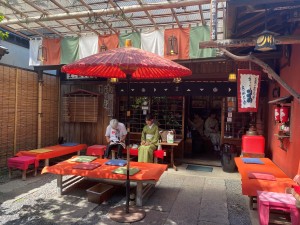EAT IN ASIA / Lifestyle / Recipes
How to make matcha tea - the ultimate guide with photos
Tags: JAPAN

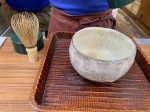
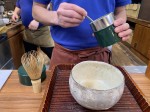
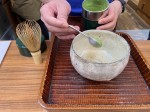
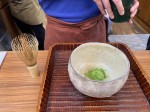

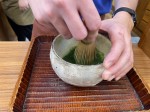


Sadō/chadō is a Japanese tea ceremony that you could enjoy at home too. You do not need to visit Japan to celebrate drinking an original Japanese tea with your friends or relatives. With these easy steps giving you a comprehensive guide to preparing this traditional Japanese matcha tea, you will be able to celebrate these unique moments in every place.
Although it might seem to be very complicated to make your matcha tea, when you start from the beginning and follow these easy steps, you will be convinced that it is not so difficult. Apart from that, you will learn how to replace all traditional utensils that are used for preparing this unique and delicious Japanese matcha tea.
And finally, when you learn how to do it properly, you will love to practice it whenever you have such a possibility. To sum it up – once learned, this wonderful drink will make you crazy!
What is matcha tea and why should you drink it?
Matcha tea is a traditional Japanese tea used for the tea ceremony (sadō/chadō). It is a valuable green tea powder that has many nutritional benefits.
First of all, it is energizing. Secondly, it is detoxifying. Finally, as matcha tea is a powder that is made from very finely ground tea leaves, drinking this tea allows you to absorb all nutrients that are in the tea.
Key factors for preparing the perfect Japanese matcha tea
- An ideal water temperature.
- Proper utensils that will let you whisk the drink and measure ideal amounts of the matcha tea powder.
- Mastering the whisking technique.
What you will need for preparing matcha tea
Ideally:
Chawan
Chawan – a special tea bowl.
Chasen
Chasen – a whisking utensil made from one piece of bamboo. Chasen should consist of about hundred thin bamboo prongs.
Chashaku
Chashaku – a special bamboo teaspoon.
Furui
Furui – a traditional tea strainer.
Chasen kusenaoshi
Chasen kusenaoshi – a tool that is used for storing ‘chawan’ in a safe and proper way.
An original Japanese organic matcha tea – the highest the quality is, the better it is. Matcha tea powder should have an almost emerald, green color and be finely grounded.
Workaround:
- Replace ‘chawan’ with a wide bowl that would allow you whisking the matcha powder. Ideally it should be a 16 oz, wide bowl.
- Replace ‘chasen’ with a separate shaking utensil. It could be an appropriate jar, bottle or with a hand shaker.
- Replace ‘chashaku’ with a specially dedicated small teaspoon, that would let you measure 2 grams of the matcha powder. Use a separate spoon that will not be absorbing any other smells and tastes as they might easily destroy the subtle and the delicate matcha tea taste.
- Replace ‘furui’ with a fine strainer that will not allow small matcha clumps fall into the beverage.
- If you are not using the traditional ‘chawan’ then there is no need for any ‘chasen kusenaoshi’.
- Finally, the only thing that cannot and should not be replaced is the original Japanese matcha tea. You should never cut costs on it. It should be an organic product of a high quality as only this will guarantee an ideal taste. It should be certified, be deprived of any GMO traces and grown in a fair-trade environment. Thanks to that the natural ecosystem would not be tempered and you could enjoy the full aroma of an anauthentic Japanese matcha tea that is, of course, also vegan.
Step by step matcha tea making guide
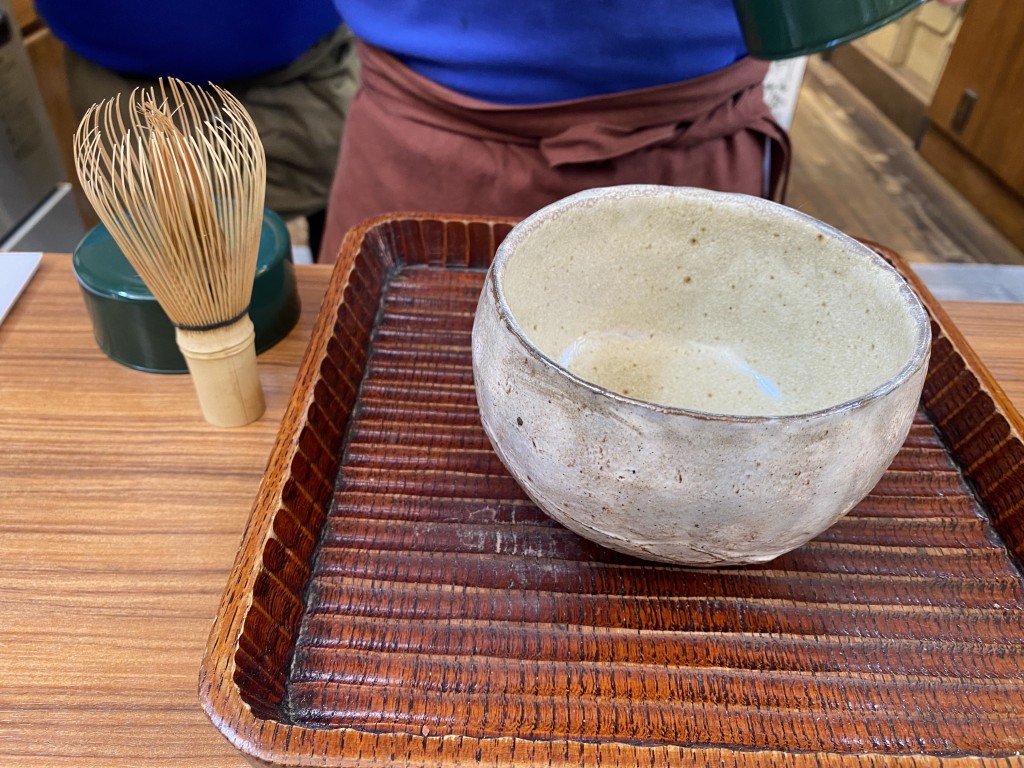
1. Prepare all needed utensils or their substitutes.
- Chawan or a wide bowl
- Chasen or a shaking utensil
- Chashaku or small teaspoon
- Furui or a fine strainer
- Matcha tea powder
2. Measure an appropriate amount of the tea powder – for a single cup or bowl you will need 2 grams of the matcha tea powder.
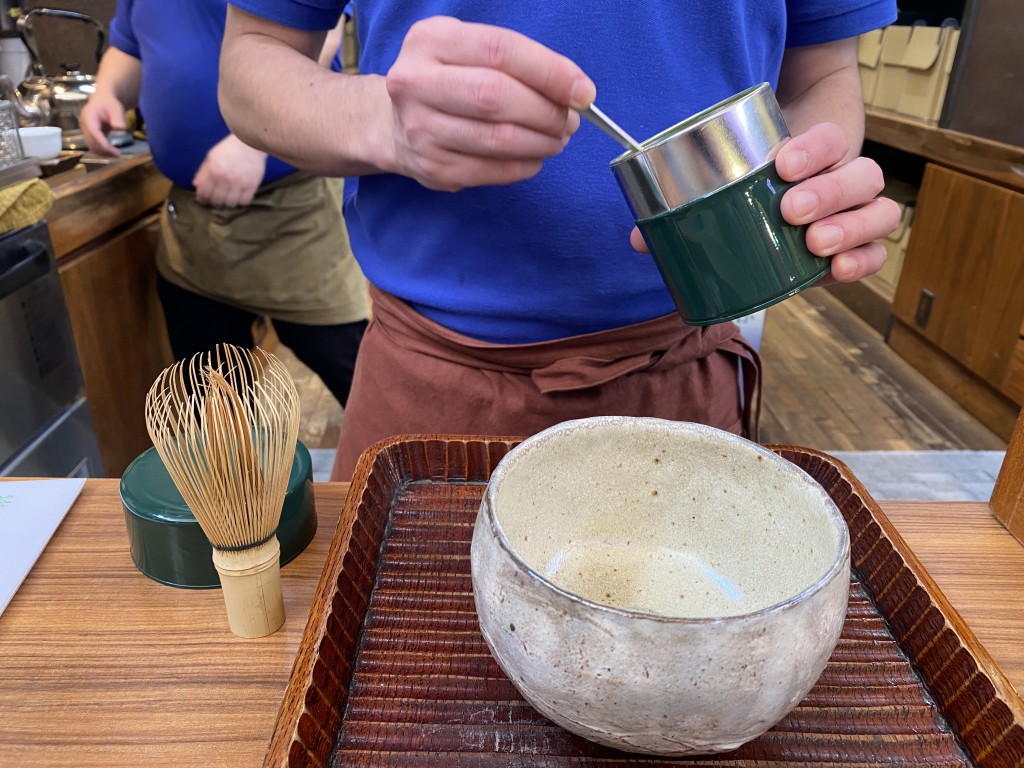
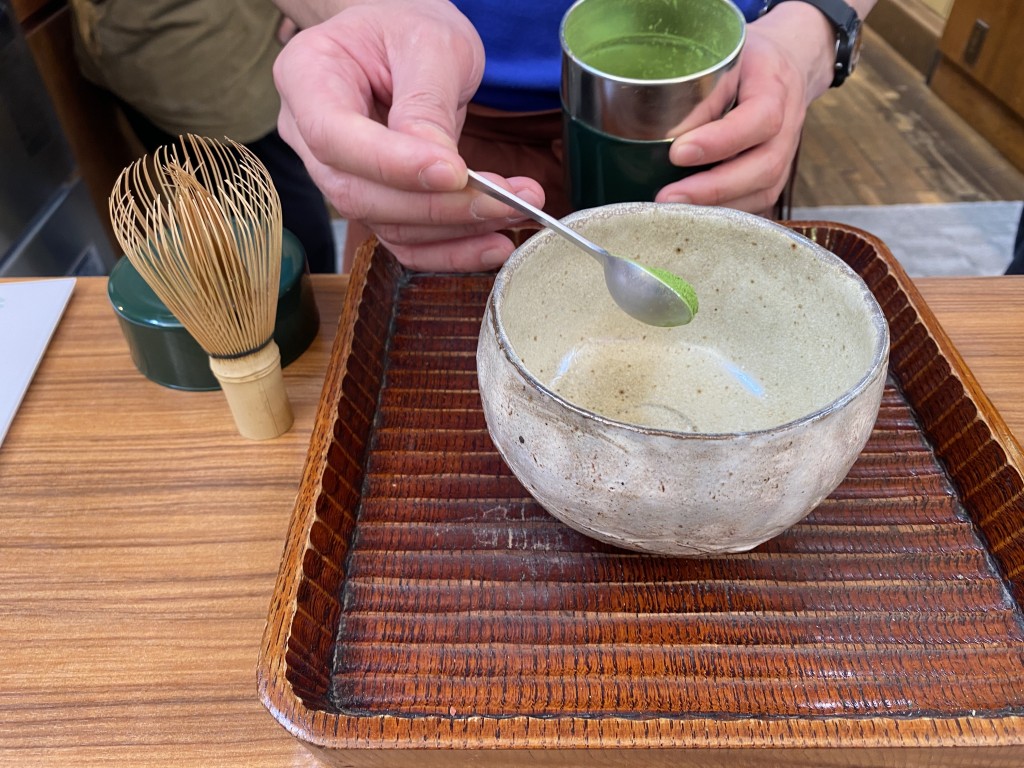
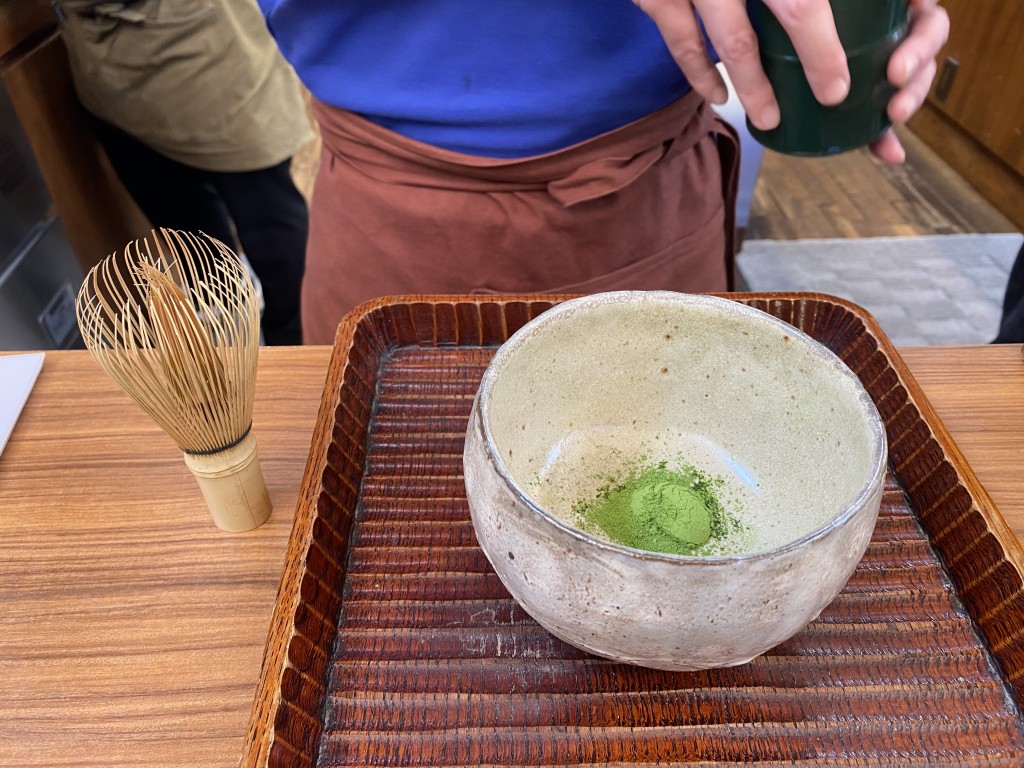
3. Add 2 oz of warm water to the ‘chawan’ or to an appropriate bowl. Remember to use water in the temperature of 75-85°C. It is crutial not to use a too hot water as it might burn the delicate matcha tea powder and make your beverage slightly bitter.

4. Whisk the mixture of the warm water and matcha tea into a smooth paste. It should have no clumps. Use for it ‘chasen’ or a separate spoon.

5. Add extra 2 oz of warm water.
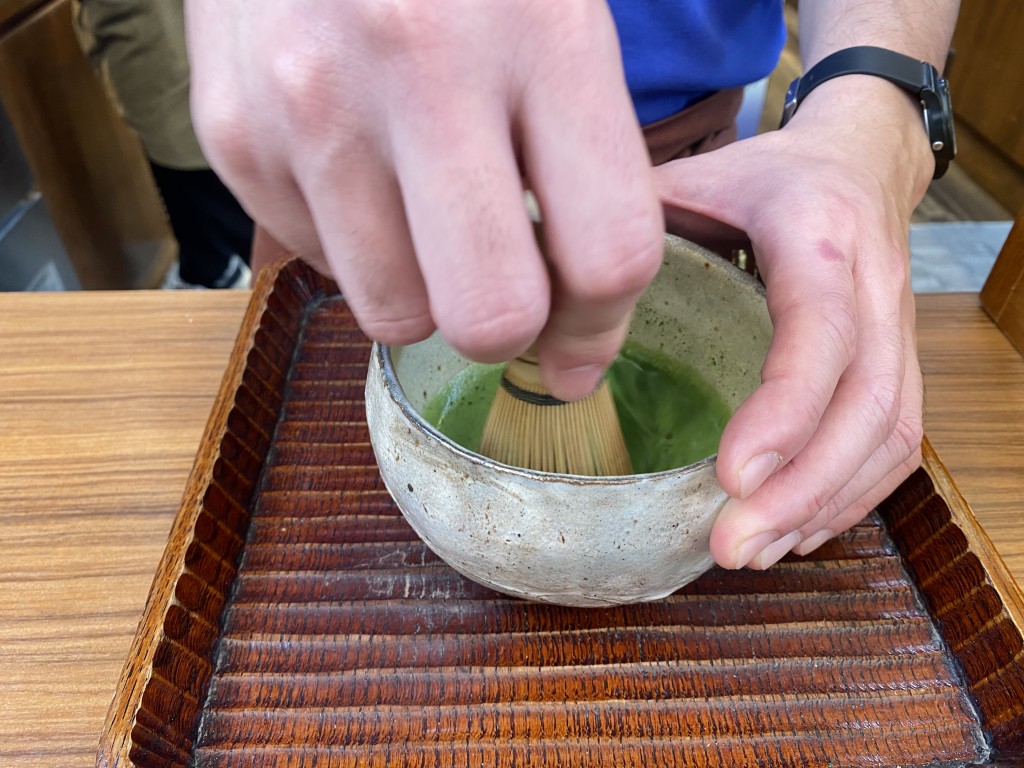
6. Create this characteristic froth by whisking or shaking the beverage. Use for it either a traditional ‘chasen’ or put the whole beverage into the prepared jar, bottle or into the hand shaker. Shake it well. While using ‘chasen’ create vivid, brisk but smooth movements like batting egg whites. After this process, you should obtain a relatively thick froth with a lot of small bubbles. Whisk in the direction from the bottom of the ‘chawan’ or bowl till the upper layer of the beverage.
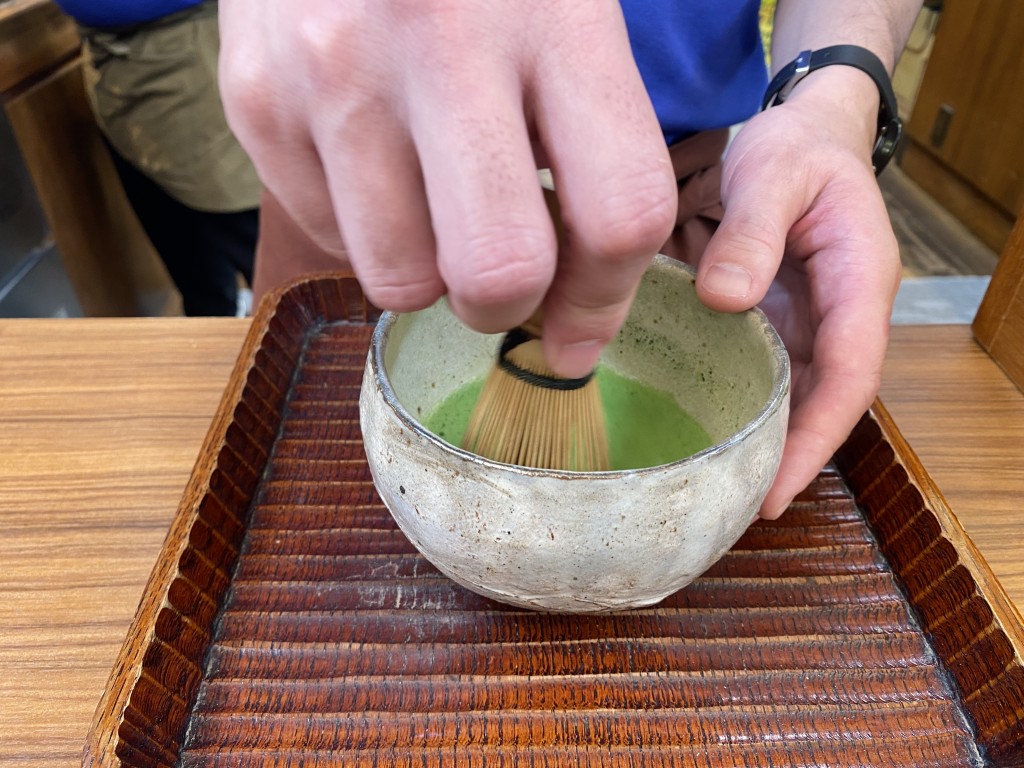
7. Use ‘furui’ or a fine strainer for pouring the matcha tea into your cup. Thanks to that, all excessive and unwanted matcha tea clumps will stay on the strainer and will let you enjoy the extra smooth texture of the beverage. Traditionally, ‘chawan’ is used both for preparing matcha tea and for drinking.

Date: 2024-05-13
Author: Beti – A passionate traveler and lover of Asian cuisine, especially Thai and Japanese dishes, Bernadeta brings her culinary and cultural experiences to life in her writing. Beyond her travels, she’s an avid technology enthusiast with a deep interest in data processing, merging her love for exploration with analytical insights.
Photographer: Adalbert – An aficionado of computers and photography, Adalbert captures the essence of diverse cuisines with a discerning eye. A connoisseur of rich flavors and particularly fond of meat-based dishes, he combines his technical skills with his passion for the culinary arts in every shot.
